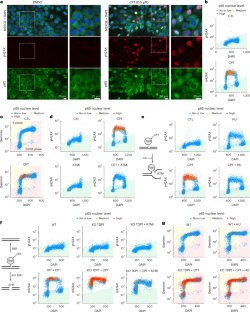2025-01-02 アリゾナ大学
<関連情報>
- https://news.arizona.edu/news/brain-study-challenges-long-held-views-about-parkinsons-movement-disorders
- https://academic.oup.com/brain/advance-article/doi/10.1093/brain/awae386/7908457
パーキンソン病ジスキネジアにおける運動皮質と運動とのデカップリングが麻酔下ケタミンによって救済される Decoupling of motor cortex to movement in Parkinson’s dyskinesia rescued by sub-anaesthetic ketamine
Abhilasha Vishwanath, Mitchell J Bartlett, Torsten Falk, Stephen L Cowen
Brain Published:25 November 2024
DOI:https://doi.org/10.1093/brain/awae386
Abstract
Gamma band and single-unit neural activity in primary motor cortex (M1) are involved in the control of movement. This activity is disrupted in Parkinson’s disease (PD) and levodopa-induced dyskinesia (LID), a debilitating consequence of dopamine replacement therapy for PD. Physiological features of LID include pathological narrowband gamma oscillations, finely tuned gamma (FTG), and altered M1 firing activity. Since most studies characterize LID through visual scoring, little is known about the relationships between ongoing dyskinetic movements, gamma, and neuronal activity at fast (sub-second) and slow (seconds) timescales. Here, we investigate how motor cortex activity changes with movement at multiple timescales in animal models of PD and LID. Furthermore, sub-anesthetic ketamine has emerged as a possible therapy for LID. How ketamine may reduce LID is not fully understood. Consequently, we investigate how ketamine affects the relationship between motor cortex activity and movement.
To investigate these questions, local-field and single-unit activity from >3000 motor cortex neurons was acquired using a standard model of PD/LID (n = 10 male rats). Data in LID and sham animals was acquired following levodopa (L-DOPA; 12 mg/kg, i.p.) and ketamine (20 mg/kg, i.p.) administration. Movement was assessed using traditional abnormal involuntary movements (AIMs) scores and head-mounted inertial sensors sampled at 200 Hz.
While correlations between movement, gamma, and single-unit activity were high in all animals during control conditions, correlations decreased considerably in animal models of LID following L-DOPA administration. This suggests that M1 can become functionally decoupled from ongoing movements in LID. Interestingly, this effect was observed in both the dopamine depleted and non-depleted hemispheres. Ketamine disrupted FTG, decreased LID, and moderately increased single-unit correlations to movement during LID. Ketamine, however, did not enhance the correlation between gamma-band activity and movement. Finally, ketamine exerted a selective effect on neuronal interactions and ensemble activity in LID animals. Specifically, analysis of cell-pair firing-rate correlations showed that ketamine induced a distinct neural ensemble state in LID by reorganizing the pattern of cell-pair interactions.
These findings provide insight into the role that motor cortex neurons and gamma-band activity play during healthy movement and LID. Results suggest that primary motor cortex does not directly trigger specific dyskinetic movements during LID but, instead, dysregulated motor cortex activity may permit aberrant movements to spontaneously emerge in downstream circuits. These data further support the anti-dyskinetic properties of ketamine and suggest that ketamine acts to reduce LID by disrupting pathological interactions between motor cortex neurons during dyskinesia.



